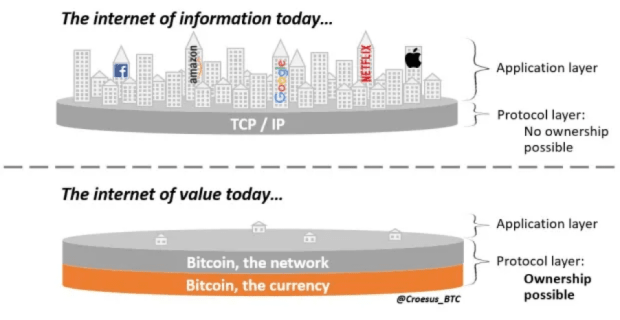Op Ed: Equity Funding Is Still a Good Old-Fashioned Way to Raise Capital
In 2017, the world hit a fever pitch with ICOs; a concept that was only three years old had taken the crypto internet by storm.
From the outset, the initial coin offering (ICO) as a concept was beautiful. It took away the barriers to invest for the average person. It enabled anyone to support not only startups and open source projects but, for the first time, protocols. The problem was that almost all the temporary glitch moonshot returns that made headlines came from the pure speculation of the token during an internet mania. None of the returns came from real business success through robust business models. If you add in sneaky cabals and VCs that would buy up pre-public offering tokens on the cheap and then openly dump them on retail investors, you get the full “Wolf of Wall Street” scenario.
The collapse of the ICO mania taught many first-time investors some powerful lessons in looking for real businesses. Don’t merely trust glossy marketing with no code down and no proof of product-market fit. Most of all, don’t be the last fool to buy into the hype.
ICOs, Open-Source Protocols and “Shitcoins”
The collapse of the ICO market also helped solidify the term “shitcoin.”
Historically, the vast majority of open-source projects have generally found it hard to raise capital due to a deficiency of revenue streams. When it comes to protocol development, it’s even worse. For example, Bob Kahn, along with Vint Cerf, invented the Transmission Control Protocol (TCP) and the Internet Protocol (IP). Both men won many awards for being the fathers of the internet, but neither of them has become wealthy from their invention, and that protocol is probably the most notable one in the world.
ICOs enabled open-source projects and protocol developers to earn money by selling a speculative token that would be needed for the protocol to work in some way. For people funding the project and buying the token, the hope is that the protocol becomes a must in the industry it is attempting to disrupt and demand for the token would create value and a return on investment.
The problem is that, for many projects, a token is not needed to make the concept or protocol work. Developers created friction in the system by shoehorning in an unnecessary and irrelevant blockchain asset. Its only real purpose was to help the developers raise money to fund the project.
But utility tokens are not particularly “user friendly.” As an end user, you don’t want the friction of having to buy a utility token on an exchange where you first have to upload all your KYC and jump through a million hoops simply to use the protocol or service. So yes, these projects got funded. But the sad part of this effort is that most likely none of these projects that collectively raised billions of dollars will ever work. The investors are left with tokens that have no value on the open market and no platform where they can be used.
Startups don’t want to screw up their projects with a strange utility token. What they want to do is offer a token that represents equity or profit share in the company. The issue with that is, in most countries, it’s illegal to do so without a license, under securities law. This is the reason a lot of startups distort their projects with these useless utility tokens in the first place. The need for a utility token (shitcoin) confuses most projects and puts up barriers to entry.
So what can be done? How can startups in the crypto space keep all the benefits that come with raising money from a crowd without all the token nonsense?
The Forgotten Art of Raising Capital by Selling Equity
Sites like bnktothefuture.com and seeders have a different angle; these are crowdfunding platforms with a difference. Backers funding projects buy real legal equity in the company they are backing. Think of it like Kickstarter with actual company shares.
Equity gives backers some legal security and a way to earn a return on a larger merger or acquisition down the line.
Traditional crowdfunding platforms like Kickstarter or Indiegogo enable people to fund projects. For doing so, supporters receive small perks or early prototypes. “Investors” are doing this mainly because they want to see a cool project get off the ground, but this can leave a bad taste in people’s mouths.
Take, for instance, the Oculus Rift Kickstarter campaign. The original Kickstarter raised $2.4 millions, and, after a few years, Oculus sold for $2.3 billion to Facebook. None of the original backers saw any of that success and only walked away with a crappy V0.1 Alpha pre-release of the VR goggles.
Buying equity in a crowd is terrific as you enable exciting projects to get off the ground without the project having to stuff a strange token where it doesn’t belong. The backers then also have the opportunity to profit from the success of the projects they back.
My company Vaultoro.com, a bitcoin-to-physical-gold exchange, recently launched an equity crowdfunding campaign through bnkofthefuture, and it’s been an excellent option for us. It is legally very safe without uncertainty, and it was easy to execute while still enabling a crowd of people to have exposure to our opportunity. Even though ICOs were raising millions in 2017, we at Vaultoro stayed away due to the murky legal situation of issuing what any sane person would see as a security without permission.
For the investor, equity is far better than an ICO because there are no presales at different valuations. The crowd investors are buying alongside VCs, and if there is a massive exit (or failure) in a few years, then everyone sees returns (or losses) on an even playing field.
This is very different from the game many VCs and cabals were playing when they pre-bought ICO tokens for cheap and dumped them as soon as retail investors rushed in with a frenzy of “get rich quick” FOMO. The worst part was that the naive retail investor was being told that ICOs were eliminating VCs from the startup investor game. In reality, the retail investor was getting fleeced in the frenzy.
Tips for Crowdfunding Your Project
There are a few tips that I think every company can use when raising funds from a crowd.
Tip 1: Don’t rely only on the organic crowd to fund you directly.
Even the best projects raise through angel investors first so that, when they launch, they don’t start with $0 committed.
Try to raise as much as you can privately before going live. Remember, on platforms like bnktothefuture, these precommitment term sheets have to have the same valuation to show up as part of the round. Angel investors and VCs simply get the choice to invest first; the crowd gets what wasn’t sold and at the same price.
Tip 2: Have a marketing budget before you go live.
You will want about a tenth of your goal already in your coffers for marketing the opportunity. Projects can reduce this by being creative with their marketing, but a solid marketing plan is a must in any funding round.
Tip 3: Have press releases ready to go for when you reach your first goals.
Most press love to cover the success of the early 24 hours of a campaign, hence why pre-commitments are so essential to having a successful crowdfunding campaign.
Tip 4: Build a community.
People don’t only want to invest; they want to join a journey with you. As you raise capital, keep updates rolling on all your socials.
To wrap things up, I feel that people in the crypto industry have forgotten that there are other ways to raise money than to create just another shitcoin. With equity crowdfunding, both startups and investors get a better deal than building or buying into a glossy token sale. Startups don’t need to mash a legally questionable token into their great projects, and investors don’t have to risk being dumped on by early pre-investors.
So the takeaway is that buying good, old-fashioned equity in projects is a better option both for projects trying to raise and for investors seeking suitable projects. ICOs, STOs or IEOs (virtually all the same thing) aren’t going to go away, and they shouldn’t, but they need to mature before good projects (like ours at Vaultoro) would ever think about using such a funding model.
This is an op ed by Joshua Scigala. Views expressed are his own and do not necessarily reflect those of Bitcoin Magazine or BTC Inc.
The post Op Ed: Equity Funding Is Still a Good Old-Fashioned Way to Raise Capital appeared first on Bitcoin Magazine.









